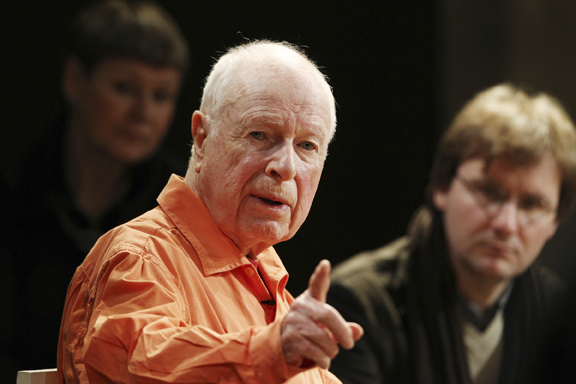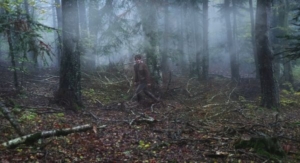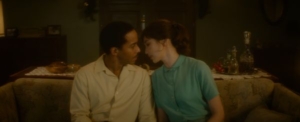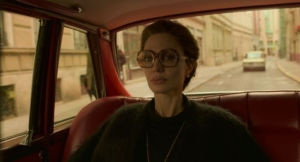Theater legend Peter Brook sprang to international prominence decades ago by directing the wonderfully violent Marat/Sade and a revolutionary version of A Midsummer Night’s Dream. His 1968 book, The Empty Space, has been widely read and taught for decades, revered by some on a near-Biblical level. Peter Brook: The Tightrope, a collaboration between Brook and his son, offers a rare look at his rehearsal process. But it may be a surprise to some that this man who became known for making waves spends so much of his time focusing on the smallest of ripples.
Thus, the opening minutes of the film may feel tedious as they involve a group of actors receiving minute corrections on a simple-sounding exercise: walking on an imaginary tightrope. But patience will be rewarded. By the end, the actors use the same technique to create some achingly beautiful, though quiet and intimate, storytelling. That they do it with so little assistance—one scene is simply about a man trying to light a candle—is testament to Brook’s method. Their concentration is total, physical, and riveting.
Simon Brook’s use of hidden cameras is inspired. The lack of intrusion frees the actors from added self-consciousness and shows off up close their craft in a way unattainable in large performing spaces. The rehearsal footage is broken up occasionally by an interview with Brook, who offers the occasional glittering maxim. At times, his meaning is hard to grasp, or it feels as though his remarks are incomplete. Of course, the point is for the actor to feel what the tightrope means, and no documentary could hope to substitute for that experience.
It’s hard to say if this film will appeal to those who aren’t theater or art buffs. Certainly, observation of this work could both reinvigorate the spectator and change what he or she looks for in the theater. In The Empty Space, Brook argued that too often audience members blamed themselves for not enjoying a show. After attending a lifeless production of Shakespeare, an audience member might simply say, “I guess I don’t get it.” The actual fault, Brook maintains, is not in themselves but in the stars of the show, who must have lacked the right vitality.
In a similar vein, in The Tightrope he describes how an audience often applauds the first appearance of an extravagant set. But the set will soon bore them, he believes, and then actually obstruct the work of the theater artist, which is to spark the imagination. The tightrope exercises are the method by which Brook expects his actors to animate every single moment of their life on stage. His hope is that by the end of his workshop “we have confronted something richer, more astonishing, more appealing and yet more infinitely demanding than we ever imagined…[which] has made us now want to come back to the task.” Whether the task is creating or enjoying art, The Tightrope does make one want to attempt it.

















Leave A Comment